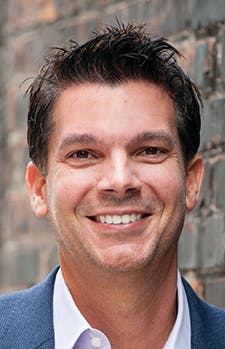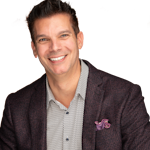Like many of you, I’ve dabbled in sleep apnea. Like all of you dabblers, I quickly realized that dabbling was a big mistake.
- How do we screen?
- How do we integrate?
- How do we build a new set of verbal skills with our team?
- How do we develop real relationships with MDs who deliver?
- Oh, and how do we get paid?
Sound familiar?
Let’s be truthful. If your practice is anything like mine, you’ve learned that treating obstructive sleep apnea (OSA) is very different than treating tooth decay and periodontal disease. We need new processes for screening and treatment planning. We need new language skills and new relationships. Most of all, friends, we need a new mindset.
We need to think differently.
I’ll tell you a story. My team’s story, in fact. I think you’ll agree. Although you and I have new to face with sleep medicine, we’ll have new to thank for years to come.
My team and I have restored, replaced, and rehabilitated thousands of smiles over the years—some for form; some for function; most for both. Over those years, we’ve loved every moment of transforming every smile.
Well, maybe not every moment.
One day, two years ago, one of those smiles came in for hygiene recare. This was a great smile on a great patient we’d known for 15 years. Like most appointments, we caught up on the usual niceties. Unlike most days, as we got down to what was happening with our patient’s oral health, I noticed something unusual for her. She was anxious. And she was never anxious.
I asked: “Are you OK? It feels like there’s something you want to talk about.”
She responded: “I’ve just been so tired lately.”
I asked: “How so?”
And jumping into the short story, we talked through the Epworth Sleepiness Scale (ESS). For those of you who treat OSA, you know what I mean. For those of you who are new, the ESS is a simple questionnaire and one of the tools we use to assess risk prior to having a patient undergo a sleep study.
Back when we dabbled in OSA, we would have simply handed our patients this questionnaire. As we learned, we transformed our results—with one twist. We stopped handing the questionnaire to our patients and asked them to assign numbers as we asked them the questions. The ESS became a conversation starter for us.
I asked our patient: “If you are sitting and reading, on a scale of 0 to 3, with 3 being the highest number, what are the chances that you start dozing off?”
She responded: “What time of day?”
That was a telling response. It was also a response I could have easily missed if I had simply handed her the questionnaire to fill out.
I asked: “Would the time of day change your answer?”
She responded: “Yes! If I’m sitting and reading midday or after for more than 10 minutes, I am definitely a 3.”
We proceeded through these scenarios:
- Watching TV
- Sitting inactive in a public place
- As a passenger in the car
- Lying down to rest in the afternoon
- Sitting and talking to someone
- Sitting quietly after lunch
- In a car while stopped at a light
This was her teary response to the last question: “I’m scared to drive in the car with my daughter when I pick her up from school. Those are the stoplights I find myself nodding off at . . . almost every day.”
That day, I asked myself and my team a very important question: “If we had just one opportunity to help a parent keep her child and herself safe, would we take it?” I’d give you a thousand guesses to know what the team shared if I believed you needed them. But we both know only one guess will do.
I’m not sure how many years ago you crossed the graduation stage. I am sure we signed the same Hippocratic oath. We promised a few biggies that day. We promised to do no harm. We promised to understand and have sympathy as we cared for our patients. We promised to prevent disease whenever possible, as prevention is always preferable to trying to cure.
Dabbling in OSA is dangerous. When we dabble, we miss on the diagnostic and treatment-planning side. When we dabble, we have a difficult time building the necessary relationships with our medical counterparts. When we dabble, we struggle to get reimbursed. We can miss the patients who may fall asleep at the wheel. We can miss the prevention of hypertension, heart attack, stroke, diabetes, and a host of behavioral conditions medicine is just beginning to understand.
Diving deep into sleep is essential. We learned from experts how to prevent periodontal disease and treat tooth decay. What makes us not do the same with sleep? Is it the fear of new? Do we believe we’re less than for not knowing already, so we avoid it?
Total transparency. Before that patient, we were on autopilot. Sleep was so new to me that, yeah, it scared me. I also felt like an expert in the restorative treatment I provided. I’d been speaking and writing on it for years. So, admittedly, I had to check my ego. I had to be OK with being the newbie instead of the go-to. It wasn’t easy. It was, however, right. And as my team and I learned to combine sound clinical principles with systems that turned the obstacles of OSA into opportunities, we accomplished three things:
- We improved our patient care.
- We branded our practice as the one that unites medicine and dentistry.
- As a happy by-product, we gained epic practice growth.
I wasn’t always comfortably awake to OSA. In fact, I’m not all the way there yet, but fortunately we don’t have to go on these journeys alone.









